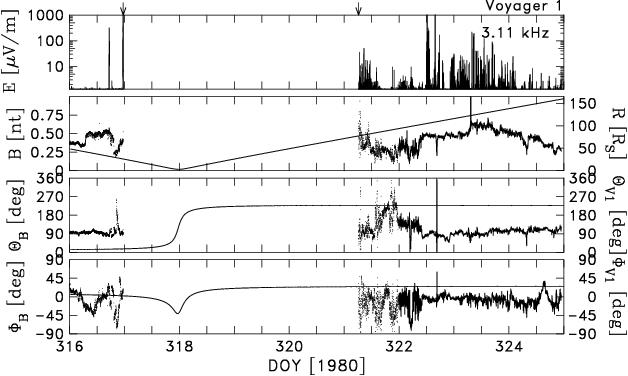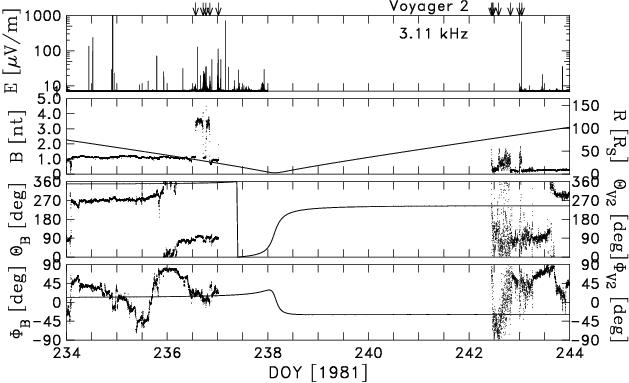In the technique section we describe the concept of straight magnetic field lines extending from the spacecraft location to intercept a shock or parabolic form about the planet.


The figure to the left shows the actual trajectory of the Voyager 1 spacecraft through the Saturnian system. Three different views of the trajector are shown in the coordinate system of this analysis. Saturn is at the center of the coordinate system and the units shown are Saturnian radii. The start of each new day is marked along the trajectory from days 312 to 328. The parabola shown is the nominal location of the bow shock as determined by inbound and outbound crossings by the spacecraft.
An overview of the Voyager 1 data set is shown to the right. The top panel shows Langmuir wave activity as measured by the PWS instrument. These constitute the "events" on which this analysis will key. The onset of a Langmuir wave event marks a time when the magnetic field is tangent to the shock surface at the point of contact. Below that are panels shows the measured magnetic field in magnitude, longitude, and latitude along with the spacecraft's distance, longitude and latitude relative to the planet.
The spacecraft is most likely to observe a Langmuir wave event when the spacecraft's position relative to the planet is the same (or opposite in sign) to the measured magnetic field. Outbound observations are likely to occur at many times given the probably connection to the flanks of the shock.


The Voyager 2 trajectory through the Saturnian system and an overview of the measured observations are also shown. Because the solar wind conditions had changed for the passage of Voyager 2, the nominal shock location is different.